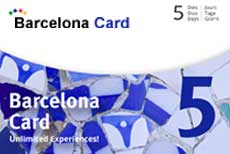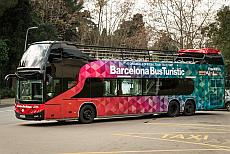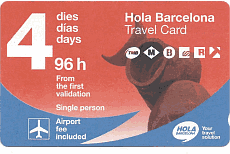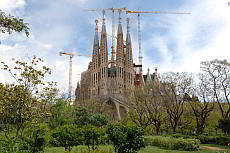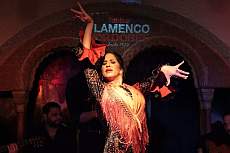The Flamenco - the rhythmic and strictly regulated interplay of dance, song, and music - may have its roots in Andalusia, but it has also arrived in Barcelona.
Visible evidence of this is the fact that artists perform in Barcelona who have made a name for themselves far beyond the borders of Andalusia in the flamenco scene.
Through migration in the 19th century, flamenco in Barcelona became a cultural jewel that enriched the city with passion, rhythm, and the captivating magic of its Andalusian heritage.
Selection of typical flamenco shows
History of Flamenco
The origin of Flamenco is attributed to the Andalusian Roma people, known as "Gitanos." Despite facing rejection and persecution for centuries, the Gitanos and their passionate sounds are recognized as the creators of Flamenco. Originating from India, the Roma settled in Spain around 1425. Flamenco emerged from the fusion of Andalusian folk music with Roma music.
Tablao Flamenco Cordobés
The Tablao Flamenco Cordobés is the oldest tablao in Barcelona. Established in 1970, it is considered one of the most important institutions dedicated to preserving and promoting the authenticity and beauty of Flamenco.

For centuries, the Roma people faced repression. Over many generations, they were prohibited from certain professions such as horse trading and blacksmithing. They were also forbidden from residing and performing music in public places. In their singing, the Gitanos expressed their despair, anger, but also their joy, hopes, and love. Accompaniment with guitar and dance came much later.
Today, Flamenco consists of three elements: singing, dancing, and guitar. For outsiders, it is primarily the dance that is associated with Flamenco. However, for those who practice Flamenco, it is the music, just as Flamenco originated: singing, without any accompaniment.
Dance was predominantly a female affair for a long time. During the period from 1850 to 1936, known as the "cafés cantantes" era, Flamenco dance became popular. Although guitar accompaniment was mentioned in the 16th century, it wasn't until around 1850 that the guitar began to establish itself as the accompaniment for singing and dancing. Until then, the Gitanos were accompanied by the means of "son," which are sounds produced with the body, such as clapping, finger snapping, and tapping the feet on the ground. Today, Flamenco guitar is an independent and highly virtuosic art form.
The origins of Roma music are still not fully understood today. However, it is certain that Flamenco incorporates many features from oriental music: tones that lie between the scales commonly used in the West, elongation, and repetition of individual syllables.
Where does the name "Flamenco" come from? In 1783, King Charles III signed the last "Gypsy Law" in Spain. Although the Gitanos were granted certain rights, some professions were still forbidden to them. However, King Charles III granted protection to some of the families, as they had served in the Flemish army. "Flame" in Spanish is "flamenco".
How flamenco came to Barcelona
Although the origins of Flamenco lie in southern Spain - especially in Andalusia - it has gained significant presence in Barcelona.
The economic boom of Barcelona in the 19th century created a cultural melting pot through migration, where Flamenco found its way into bars and cafes. The tablaos, especially the renowned Tablao Cordobés, became central venues for performances, attracting artists and a wide audience.
The cultural diversity and openness of Barcelona fostered the integration of Flamenco into local life. This was also reflected in the artistic avant-garde of the 20th century, such as in Modernisme, where Flamenco was appreciated as an expression of authenticity and folk culture.
The city embraced Flamenco not only as an art form but also as a symbol of its own diversity and cultural vitality. Today, Flamenco in Barcelona is not just an artistic performance but also a rich cultural heritage reflecting the vibrant history of the city.

